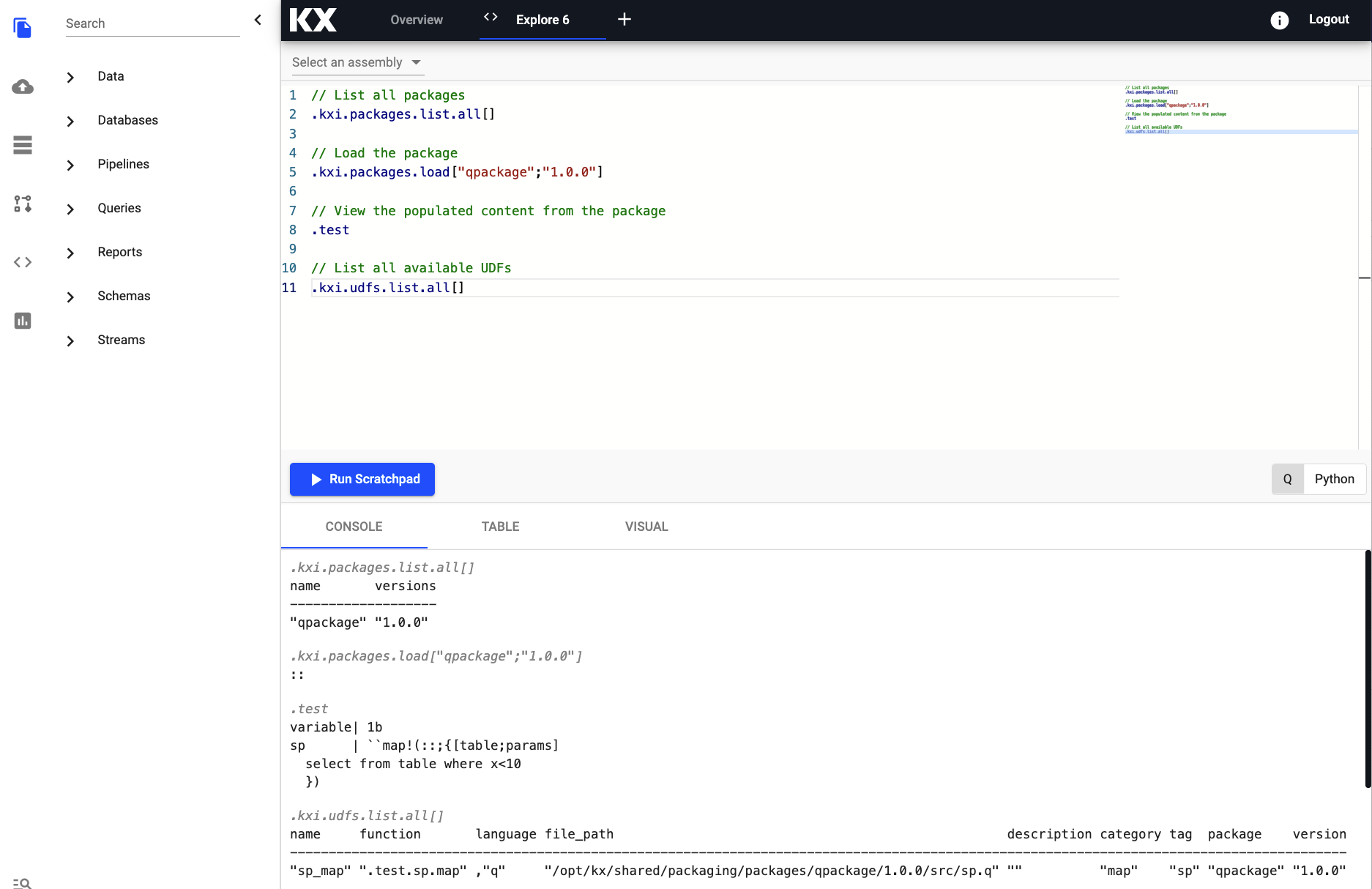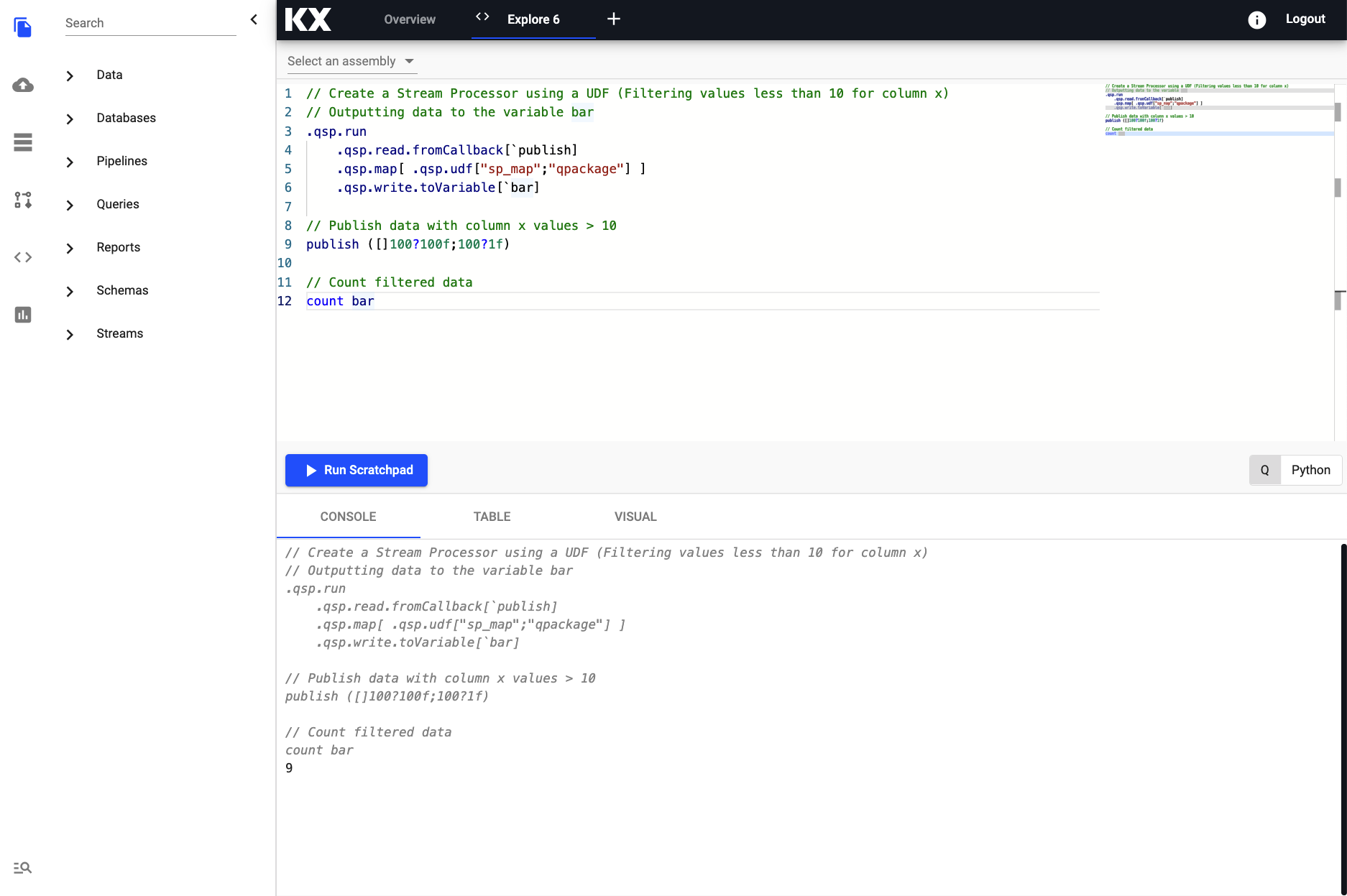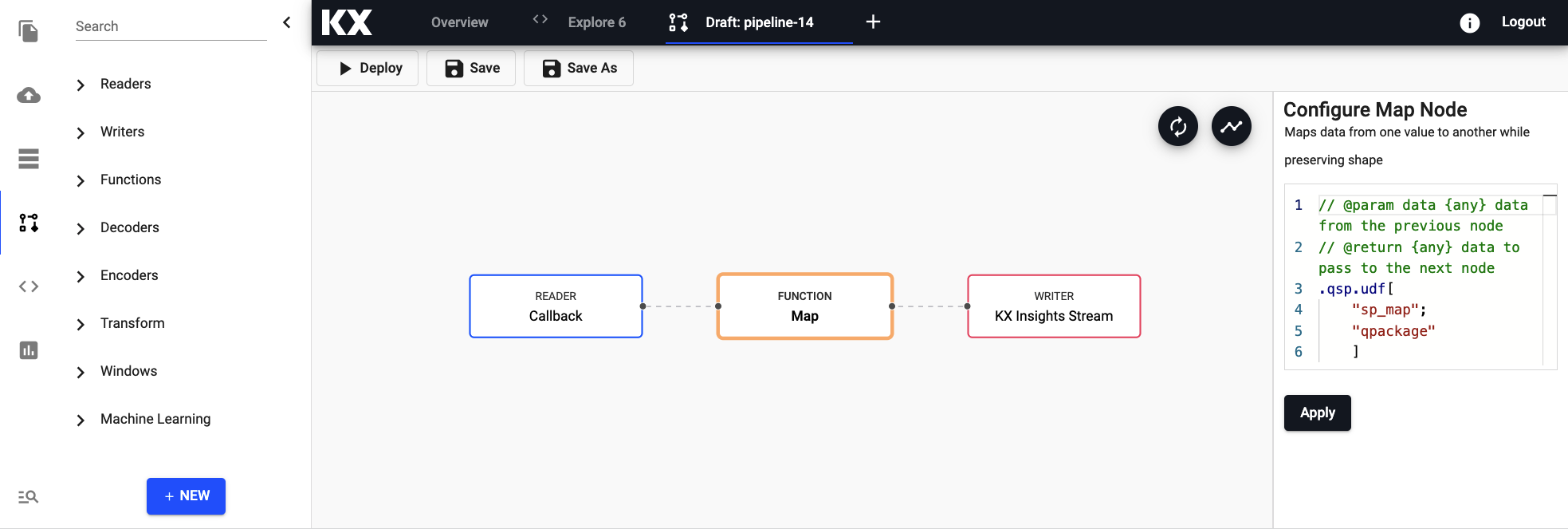Packaging and UDF Quickstart
Pre-requisites
Prior to the use of this quickstart guide it is expected that a user has:
- Installed the
kdb Insights CLIfollowing the instructions here. - Followed the packaging quickstart guide here and have access to the generated artifacts.
- A running instance of the kdb Insights Enterprise with sufficient permissions to allow the user to upload, list and delete packages.
Uploading a package to Insights
-
List the artifacts currently available on the local machine.
$ kxi package list --artifacts Listing artifacts at: /tmp/artifacts { "qpackage": [ "1.0.0" ] } -
List the currently installed packages on the instance.
$ kxi package remote-list Listing packages at: https://insights-installation.kx.com/packagemanager {} -
Upload the package.
$ kxi package push qpackage/1.0.0 { "qpackage": [ { "version": "1.0.0", "_status": "InstallationStatus.SUCCESS" } ] } -
List the currently installed packages on the instance following upload using the CLI.
$ kxi package remote-list Listing packages at: https://insights-installation.kx.com/packagemanager { "qpackage": [ "1.0.0" ] }
Interacting with the package using the kdb Insights Enterprise UI
-
List and load the content of a package within an Explore session.

-
Using an available UDF within an Pipeline developed within an Explore session.

-
Define a map node within a Pipeline to use a UDF.

Clean up packages
-
Delete the package from the kdb Insights Enterprise instance.
$ kxi package remote-remove qpackage/1.0.0 Cleaning up packages at: https://insights-installation.kx.com/packagemanager